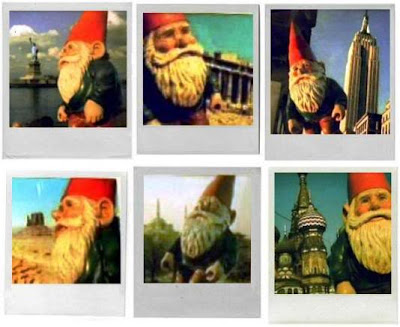At the Beaux-Arts Ball of 1931 in New York, two dozens
or so architects came dressing as buildings they designed.
William van Alen as Chrysler Building in company with
unnamed female.
My memory
proved me right that the image of people dressed up as
buildings had crossed my mind before.
Oskar Schlemmer at Bauhaus was close but not the one. It was the
Beaux Arts Ball in New York, 1931 that I found in close resemblance to the work
by Hong Kong artist Kacey Wong (黃國才). The
skyscraper attire was in every detail a derived copy of the Beaux Arts Ball
costumes. See images below.
"Drift City" in London.
"Drift City" in Egypt.
"Drift City" in Helsinki.
"Drift City" in China.
"Drift City" near the polar region.
Can
it be purported to say that an artwork, ripping off from some notable piece, can
be excused from due criticism? Yes, only
if one acknowledges the original; or it is a good art that transcends its
precedent. Minor art or parody can get
away with murder but this is not the premises the artist seeks. Wong claims that the
work is arrived from the idea of an unnamed skyscraper pending
demolition but suddenly disappeared overnight and found drifting around the
world. Perfectly solid but uninspiring, this
postulation can be considered as one among many debates on lost identity in overdeveloped
cities worldwide.
Incidentally,
keeping an old building can be a contentious issue and the issue is too complex
for art to decide if the bulldozers should be called upon. This also reminds me of what Rem Koolhaas
said about people hypersensitive to
preservation that even ordinary buildings of recent decades are being defended
frantically. Stripping out of context especially
the urban fabric, an isolated discourse on preserving any building can be
sentimental if not downright feeble.
What
is curious with the subject – a skyscraper awaiting
demolition, is in fact a modern building not an historical one. Maybe someone who dressed like an old
building simply does not look as attractive as someone wearing a tall and
slender skyscraper costume. It could be
the case that any thought of major changes from the
original would debase a shaky concept.
Amélie, the 2001 film directed by Jean-Pierre Jeunet, coincided
in timing with Kacey's snapshots around the world.
in timing with Kacey's snapshots around the world.
By
any standard, the idea of “drifting” building does not worth the effort of spending
ten years; and Wong claims that this is how long the
project has taken from 2000 to 2010, posing with the costume around the world
to demonstrate a fallacy. It is
absolutely a waste of resources from he himself and his sponsors. The means does not justify the end no matter
how much efforts and how long a time it takes.
The overworked photos only exacerbate the self-inflicted ridicule of the
project.
Artwork of "Drift City" doomed.
Updating in June 2011:
Publication of the book - Drift City 10 Years 2000-2010, an unnecessary persistence on a dumb and pointless pursuit.















